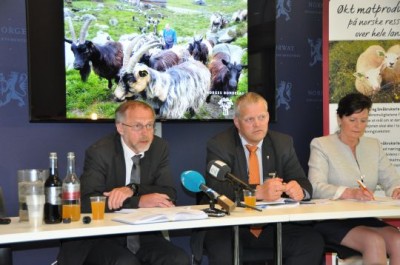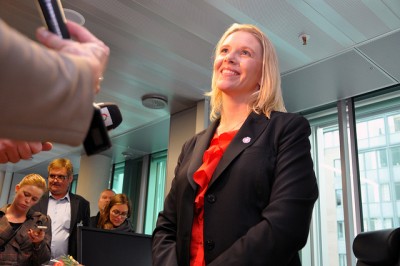Norway’s two leading farmers’ organizations handed over demands on Friday for an additional NOK 1.5 billion (USD 250 million) in state support in the form of subsidies and regulatory protection. That would amount to an average annual raise of NOK 35,000 per farmer, much more than the average Norwegian can expect to receive in this spring’s wage negotiations.

The state’s new conservative government has already stated that it’s not inclined to raise the taxpayer’s financial support of the farming industry beyond the NOK 13 billion now allocated annually. New Agriculture Minister Sylvi Listhaug of the Progress Party is instead advocating reforms that she claims would generate more food production and higher revenues for farmers through greater economies of scale.
Such reforms pose major changes, though, to the protectionism that Norwegian farmers have enjoyed for decades. They may knock down the “pillars” of the country’s agriculture industry, Nils T Bjørke, head of the powerful farmers lobby Norges Bondelag, wrote in newspaper Aftenposten this week. He thinks Listhaug’s proposals also threaten the current system that aims to spread food production around the country. Raising production quotas for relatively large farms that are closer to markets in populated areas would hurt small farms in more remote areas, he argues.
Bjørke wrote that the market itself “can’t fix” the problems faced by farming in Norway, where arable land is scarce and spread out, and where the climate restricts the growing season. He believes farmers with a tiny plot of land in a remote valley should still be able to make a living off the land and add to the country’s food production, no matter what it costs or how inefficient that may be.
That’s why the farmers have traditionally demanded and received strict regulation through production quotas, price controls, high tariffs to keep cheaper imports out of the country and “market regulation” through their dairy, poultry and meat cooperatives like Tine and Nortura. The regulation also contributes to the reasons why food prices in Norway consistently rank as the highest in the world, with a small deboned leg of lamb for roasting currently costing nearly NOK 500 at the grocery store (USD 80).

The farmers and the state now face one of the toughest negotiating sessions in years, with the new government wanting to stop pouring money into a system that it contends is not working well, as evidenced by the farmers’ own complaints and demands also during the past eight years of the former left-center government. If the two sides don’t come to terms on subsidy amounts and proposed reforms, a messy conflict looms given the farmers’ habit of dumping cow dung on city streets or in front of government offices.
The conflict is already turning political even before negotiations formally begin, with Norwegian Broadcasting (NRK) reporting this week that the Labour Party is advocating continuation of price controls, high tariffs and other regulatory measures that it tried to rein in when it held government power. Former Labour Justice Minister Knut Storberget now seems to be wooing constituents in his mostly rural home county of Hedmark by proposing formal cooperation with other opposition parties in Parliament to maintain Norway’s agricultural protection and keep food prices high.
Listhaug got some unexpected support on Friday, though, from the environmental group Framtiden i våre hender (The future in our hands). It could reveal that fully 96 percent of the Norwegian agricultural subsidies go towards meat and dairy production, and that’s not environmentally friendly. “It’s a problem that Norwegian farmers are dependent on products we should reduce our consumption of,” Arild Hermstad of Framtiden told newspaper Dagsavisen. At the same time, however, he also urged restrictions on cheaper food imports, also for environmental reasons.
The farmers’ demands this year are less onerous than last year, when they wanted nearly NOK 2 billion extra and received the equivalent of NOK 1.29 billion and 10.1 percent pay raises. The farmer-friendly newspaper Nationen reported that the decline this year is linked to predictions of lower cost growth because of low inflation and interest rates.
Listhaug’s ministry will now evaluate the farmers’ demands and then put forth its own proposal by May 5. An agreement is due by May 16 to avoid farm labour disruption.
newsinenglish.no/Nina Berglund

